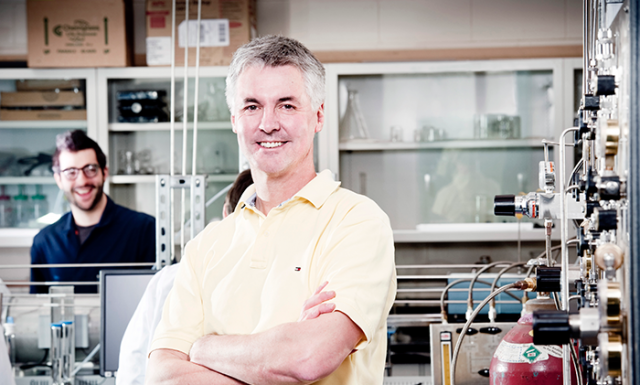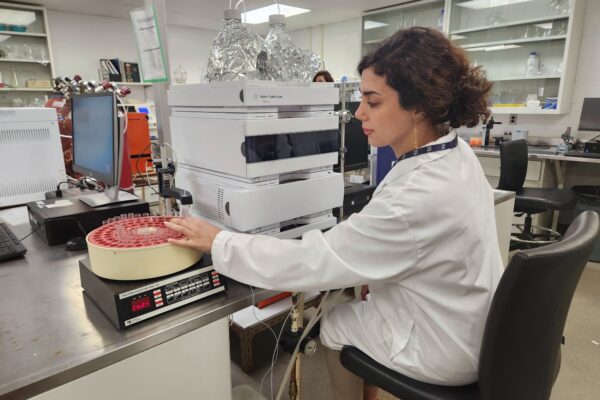- Research
-
YOU ARE
- Community member
- Future Student
- Student
- Professor
- Alumni
- Media
- Guidance counsellors
- INRS retiree
- Contact Us
- Newsroom
- Careers
- FR
-
Studies
We teach the next generation of researchers to develop scientific, social, and technological innovations.
-
Research
We find solutions through interdisciplinary research and industry or public and community partnerships.
-
INRS
We play an active role in Québec's economic, social, and cultural development.
A micro-supercapacitor made using a new electrode reached an energy density 1,000 times greater than existing electrochemical capacitors. With such a performance, comparable to current Li-ion micro-batteries, this energy storage device is a legitimate option for a range of applications from mobile electronics to wireless autonomous sensor networks.

The breakthrough, detailed in an article recently published in Advanced Materials, was a collaborative effort by researchers of the INRS Centre Énergie Matériaux Télécommunications and the Laboratory of Analysis and Architecture of Systems (LAAS-CNRS).
“The extent of the electrode’s surface and the presence of pores of various sizes are key to a large storage capacity. We designed this new 3D electrode using an electrochemical process to synthesize a very porous gold structure. Ruthenium oxide, a pseudocapacitative material featuring high electrical conductivity and very good cyclability, was then inserted into the structure, resulting in unsurpassed energy density. For this type of application, component sizes are reduced to a few square millimeters, making it possible to use such expensive materials.”
Professor Daniel Guay
Miniaturized energy storage devices are crucial for energy autonomy, in increasing demand for autonomous electronic systems and wireless technology. The most common such devices are micro-batteries, which are inadequate in terms of lifetime and thermal stability. They also don’t work well in extreme temperatures. Micro-supercapacitors, meanwhile, have virtually unlimited lifetime, greater stability, greater power density, low internal resistance, and work well at different temperatures, but their energy capacity is far weaker than batteries.
The micro-supercapacitor jointly developed by these French and Quebec research teams shows much promise for satisfying current requirements in terms of energy autonomy as it combines the strength of both of these energy storage mechanisms.
This research was conducted by Anaïs Ferris, Sébastien Garbarino, Daniel Guay, and David Pech. The results were published on September 30, 2015, in the journal Advanced Materials (DOI: 10.1002/adma.201503054) under the title “3D RuO2 Microsupercapacitors with Remarkable Areal Energy.” The research benefitted from the support of the French network RENATECH and the INRS Canada Research Chair on Energy Nanomaterials.
About LAAS
The Toulouse-based Laboratory of Analysis and Architecture of Systems (LAAS-CNRS) is a CNRS research unit linked with the Institute for Engineering and Systems Sciences (INSIS) and the Institute of Information Sciences and their interactions. Its teams conduct research on information science and technology and study the following systems: robotics and artificial intelligence, control systems and signal processing, critical information systems, and micro and nanosystems.

Green energy: from innovation to transition
You may also like

September 30, 2015
Canadian Irradiation Centre (CIC)
September 30, 2015
PhD Positions in Computational Materials DesignShare

